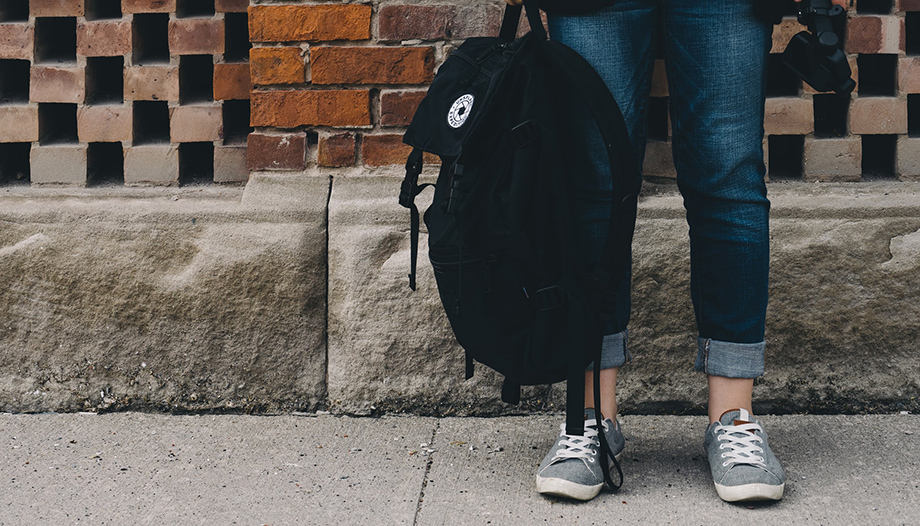The Covid 19 pandemic has revealed "numerous deficiencies and inequalities in our education systems: from the broadband and computers required for teaching and learning to the lack of access to the Internet". online to the supportive environments necessary for learning, and matching resources to needs."
This is reflected in the report Annotated indicators of the Spanish education system 2021which has just been published by the foundations Ramón Areces y Society and Education. In fact, "all indicators point to the fact that the pandemic has had a very negative impact on education, increasing inequalities and particularly affecting the most disadvantaged students".
This report, the seventh in the series, hereinafter referred to as the Indicators 2021offers a selection, updated to 2021, of the most relevant data and situation indicators on the Spanish educational system, based on statistical sources and national and international studies.
Imminent congresses and forums
Some of its conclusions, which we report here, may be an aid to reflection, together with two or three congresses that will take place soon. The city of Salamanca will be the venue, on November 8 and 9, of the national forum Dialogue on the future of educationThe aim of this initiative, an initiative of the Spanish government, the European Commission and Parliament, and 70 other institutions, is to analyze the opportunities and challenges in this post-pandemic stage.
Before that, on October 22 and 23, the 48th national congress of the Spanish Confederation of Education Centers (CECE), sources from the organization have confirmed to Omnes. Under the title Challenges of the new educational scenarioThe congress will be attended by experts such as Gregorio Luri, Álvaro Marchesi, Ramón Barrera, Lucas Cortázar, Ismael Sanz, Carmen Pellicer, Javier M. Valle, Álvaro Ferrer and Miquel Rossy, among others (see Actualidaddocente.cece.es y congresoscece.es)
"The people of the schools, their directors, their teachers, want to meet again, to share experiences and learning after such a hard year," said the president of CECE, Alfonso Aguiló. "Things have changed a lot in the last two years and it is good to provide a space for collective reflection," added Alfonso Aguiló.
On the other hand, the general secretary of Catholic SchoolsPedro Huerta, in the circular letter that he addresses to the heads of the nearly 2,000 schools in the organization at the beginning of each school year, encouraged them "to face new challenges and objectives with enthusiasm, to grow in the mission and to leave aside improvisations and individualism.
"Even if we continue with masks, bubble groups, gel and videoconferences, it is time to demonstrate once again that 'we know how to adapt to the circumstances', and to 'keep intact the objectives of being schools of care, relational spaces and evangelizers of meaning'. The next congress of Catholic Schools will take place in 2022, a spokeswoman told Omnes, after the one held in Madrid in 2019, under the theme. Magister. Educate to give life.
The educational context
The report of the Society and Education and Ramón Areces Foundations, on indicators of the spanish education system 2021The book is divided into 5 blocks that include figures on education in Spain, educational resources, educational results, education and the labor market, and for the first time includes a block dedicated to the educational context experienced during the covid-19 pandemic. The book also includes 13 commentaries by national and international experts on different aspects of the educational reality.
In his commentary entitled Ensuring equitable post-pandemic recoveryAndreas Schleicher, Director of Education at the Organization for Economic Cooperation and Development (OECD).OECD), analyzes the impact of the pandemic on educational systems based on the report of the Special Survey, The State of School Education-One year into the covid pandemic'.by the OECD.
Relationship between school days and performance
Andreas Schleicher notes that "the countries with the worst educational performance are the same countries that have lost the most school days during the pandemic". "This means," says Schleicher, "that this crisis has not only increased educational inequality within countries, but is likely to have increased the achievement gap between countries as well."
– Supernatural Special Survey (2021) shows that where school closures have been necessary, many countries have made significant efforts to mitigate their impact on students, families and teachers, "generally paying special attention to the most marginalized groups. 71 % of countries with comparable data have used remedial measures to reduce learning gaps in primary, 64% have done so in lower secondary and 58 % in upper secondary education. About half of the countries have used special measures targeting disadvantaged pupils, while about 30 % have focused on measures targeting immigrants, refugees, ethnic minorities and indigenous groups."
Despite corrective measures, pandemic-driven school closures have particularly affected students from disadvantaged backgrounds. Although various reports (e.g., European Commission, 2020; UNESCO, 2020) had already pointed out that school closures increase inequality among children from disadvantaged family backgrounds, it has also harmed low-achieving pupils, as reported in the commentary by Ludger Woessmann and his team.
Gap not compensated by parents
In this commentary, the authors of Indicators 2021 The commentary reports on the specific harm that the lack of teacher support has done to underachieving students. Based on a German time-use survey, the commentary shows that during the pandemic school closures, daily learning time was more than halved from 7.4 hours per day before the closures to 3.6 hours per day during that period.

"This reduction has been significantly greater for low-achieving students, who have substituted study time in non-proportionate numbers for activities that are considered counterproductive to children's development-such as video games and watching television-rather than for beneficial activities such as reading or physical exercise," the analysis notes.
According to Indicators 2021The covid-19-driven learning gap between high and low achievers has not been compensated for by parental activity. Even before the school closures, parents of low-achieving students spent less time studying with their children than parents of high-achieving students (0.4 versus 0.6 hours per day)."
Given that the increase in time spent has been greater for parents of high-achieving students (+0.6 vs. +0.5 hours), school closures have only exacerbated this inequality in parental involvement. Nor have school activities compensated for the learning gap between pupils, say the experts.
About LOMLOE
Antonio Bolívar, professor at the University of Granada, comments on the reform of the curriculum in the recent LOMLOE (pg. 192 of Indicators 2021): "If the essential or basic learning that all students, as citizens, must master when they leave school is not determined, those officially established become what everyone should desirably achieve and, therefore, standards that exclude those who do not achieve them".
For their part, José García Clavel and Roberto de la Banda, economists at the University of Murcia, propose some ideas to make up for the lack of digital resources detected during the pandemic period.
"A student's confidence in Mathematics depends more on the activities carried out at home during childhood than on the means that the student now has. This variable, 'confidence in Mathematics', has been shown to be important for performance in this subject: an increase in that index is linked to a significant increase of 33.1 points in Spain explaining 21.0 % of the variance."
Digital resources, teaching lifeline
During school closures, digital resources have become the lifeline of teaching; pandemic has forced teachers and students to adapt quickly to teaching and learning online, notes Indicators 2021Virtually all countries have rushed to improve digital learning opportunities for both students and teachers, and have promoted new forms of collaboration among teachers.
"However, the crisis has caught many education systems unawares, including Spain's, as can be seen in graphs 93 and 94 of the report, which show the provision of digital classrooms and virtual learning environment services by autonomous communities of public and private educational centers."
The two graphs below show how one academic year before the pandemic began (2018-2019), the number of classrooms with interactive digital systems and the percentage of schools with virtual learning environment services were lower in public schools than in private schools.
According to Andreas Schleicher, Director of Education at the OECD, "it is time for countries to learn from the pandemic to reconfigure people, spaces, time and technology, and design more effective and efficient educational environments to create a level playing field for innovation in schools".
Some conclusions
Some of the conclusions pointed out by the authors of Indicators 2021Without being exhaustive, they refer to the following topics:
1) Education in Spain. "A greater attractiveness of Vocational Training, even for recent ESO graduates, as the percentage also improves in the ages of 16 and 17" (Juan Carlos Rodríguez, researcher at Analistas Socio-Políticos (ASP) and professor at UCM, p.61).
2) Educational resources. "Spain, together with France, are the two countries that invest the least resources in public policy on scholarships and loans to students in Higher Education" (pp. 100-103, Juan Hernández Armenteros, University of Jaén, and José Antonio Pérez García, Polytechnic University of Valencia). "The scientific evidence points to the lack of strong conclusions regarding the relationship between the number of students and teachers per classroom, hours of instruction and performance" (Oscar Marcenaro Gutiérrez, economist and professor at the University of Malaga).
3) Educational results. "Spain has managed to achieve the goals indicated in the European objectives of Education and Training 2020 for children's schooling and for Higher Education. The rest of the objectives still have a long way to go before they are met, especially in relation to early school leaving" (pp. 111-167, Miguel Ángel Sancho, president of Sociedad y Educación, who analyzes the European objectives for 2021).
4) Education and employment. The pandemic has led to a boom in the demand for digital services and solutions, accelerating the digital transformation of companies and teleworking, in which the level of education and the demand for continuing education and in the area of STEM professions (STEM) has a role to play.Science, Technology, Engineering and Mathematics) (pp. 205-243, José Antonio Herce, Florentino Felgueroso, Luis Garrido, moderated by Daniel Santín, round table broadcasted by the channel of tv of the Ramon Areces Foundation).








